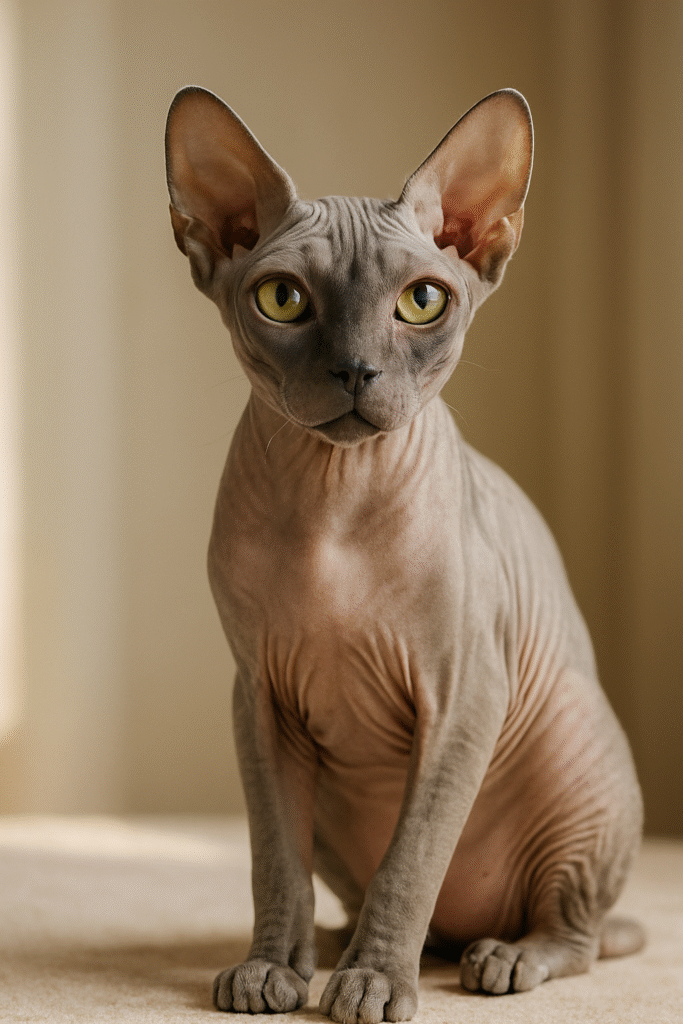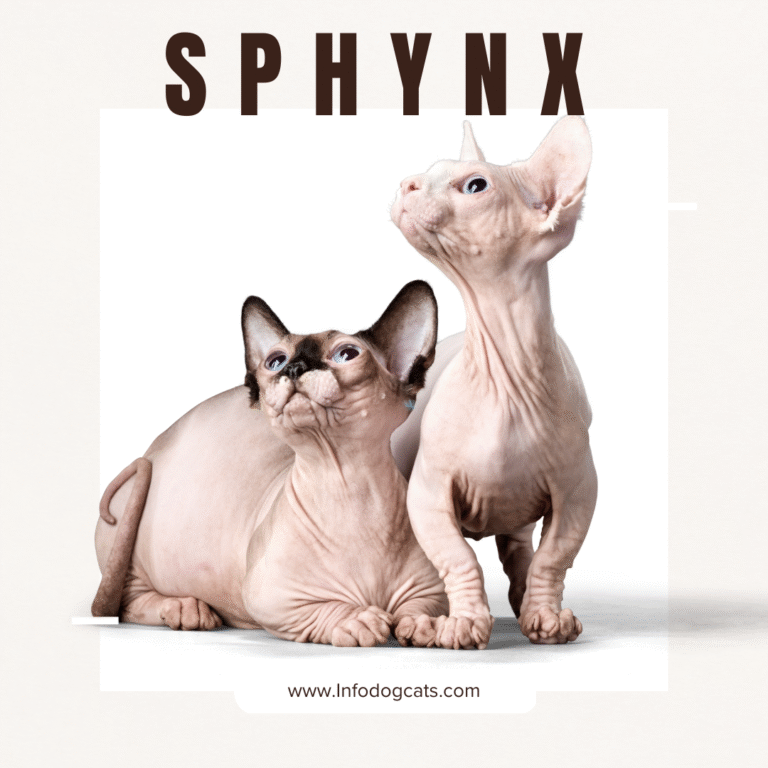The Hairless Sphynx Cat: The Ultimate Guide to a Unique and Affectionate Breed
Key Highlights
- The Sphynx cat is a striking hairless breed with a warm, affectionate, and social nature.
- Despite their lack of fur, Sphynx cats need regular grooming and skin maintenance.
- This breed thrives on companionship and does best in homes where they are rarely left alone.
- Owners should pay attention to skin health, sun protection, and heart wellness.
- Australia’s climate requires special care to protect the Sphynx from heat and cold.
- Choosing an ethical breeder or adopting from a rescue ensures a healthy and happy cat.
- Owning a Sphynx comes with initial and ongoing costs, but the bond is incredibly rewarding.
The Sphynx cat is one of the most instantly recognizable breeds in the world. With its soft, hairless skin, large ears, and playful personality, this unique feline is adored by cat lovers across Australia. Far from being “just unusual-looking,” the Sphynx is a devoted companion, often compared to a loyal dog for its love of attention and interaction.
Originating from an unexpected genetic mutation in Canada in the 1960s, the Sphynx has grown into a beloved and sought-after breed worldwide. In Australia, its popularity continues to rise as more pet owners discover its affectionate temperament, high intelligence, and quirky charm. If you are considering bringing a Sphynx into your life, or simply want to understand this fascinating breed, this guide will cover everything from their history and traits to care tips for Australian homes.
Sphynx Cat Overview
| Attribute | Details |
|---|---|
| Origin | Canada, 1960s (natural genetic mutation) |
| Size | Medium (3.5–7 kg) |
| Body | Muscular, athletic, with a rounded belly |
| Coat | Hairless, with soft suede-like skin |
| Colours & Patterns | All patterns visible in skin pigmentation |
| Eyes | Large, lemon-shaped; green, blue, gold, or hazel |
| Ears | Large and upright, bat-like |
| Temperament | Affectionate, playful, intelligent, social |
| Vocalization | Moderate; enjoys “talking” with owners |
| Lifespan | 12–16 years |
| Health Concerns | Skin care, HCM (heart disease), dental issues |
| Grooming Needs | High; regular baths, ear cleaning, nail trimming |
| Energy Level | High; loves play and climbing |
| Family Compatibility | Excellent with children, other pets, and seniors |
| Australian Climate Fit | Indoor living is ideal; needs sun and cold protection |
| Average Cost (Australia) | $2,500–$5,000 (kitten) + $800–$1,500/year care |
| Allergy Note | Not truly hypoallergenic but may trigger fewer reactions |
The Fascinating History of the Sphynx
The Sphynx cat’s story began in Toronto in 1966 when a hairless kitten named Prune was born to a domestic shorthair cat. This natural mutation captured the interest of cat enthusiasts, and selective breeding programs soon began to develop the breed into the playful and healthy cats we see today.
Breeders carefully introduced bloodlines from Devon Rex and American Shorthairs to maintain genetic health while preserving the Sphynx’s iconic hairless look. By the 1990s, the breed was recognized by major cat associations such as CFA and TICA.
Arrival in Australia
Sphynx cats reached Australia in the late 1990s and quickly gained a small but passionate following. Today, they are seen at cat shows and in loving homes across the country. Australian breeders prioritize ethical practices, health testing (especially for heart conditions), and socialization, ensuring kittens grow into confident and healthy pets.
Unique Physical Features
The Sphynx’s appearance is unlike any other cat:
- Skin: Feels like soft suede or peach fuzz. Patterns and colours show clearly on the skin.
- Eyes: Big, lemon-shaped, and highly expressive—often appearing curious or mischievous.
- Ears: Large and upright; require regular cleaning to avoid wax buildup.
- Body: Medium-sized, strong, and muscular with a cute rounded belly.
- Tail & Paws: Long whip-like tail and oval paws with long toes, great for climbing.
Special Care in Australia
Because their skin is exposed, Sphynx cats in Australia must be kept safe from harsh sun and cold winters. Indoor living is ideal, and some owners even use soft clothing or cat-safe sunscreen for extra protection.

Personality and Temperament
Sphynx cats are affectionate, playful, and love to be the centre of attention. They often follow their owners around the house, snuggle under blankets, and enjoy interactive play. They get along well with children, other cats, and even dogs, making them excellent family companions. However, they do not like being left alone for long periods, so they are best for households with someone home often or with other pets.
Health and Care Needs
While Sphynx cats are hardy overall, their unique features require special attention:
- Skin Care: Regular baths remove oils that would normally be absorbed by fur.
- Sun Protection: Avoid direct Australian sun or use cat-safe sunscreen.
- Temperature Control: Provide warm bedding in winter and cool indoor spaces in summer.
- Heart Health: Regular vet checks for Hypertrophic Cardiomyopathy (HCM) are essential.
- Diet and Hygiene: A quality diet, plus routine nail, ear, and dental care, keeps them healthy.
Cost and Ownership in Australia
Owning a Sphynx is a financial commitment. Kittens typically cost $2,500–$5,000 from a reputable breeder. Annual expenses for food, vet care, and grooming average $800–$1,500.
Ethical breeders in Australia will provide health guarantees, vaccinations, and advice for lifelong care. Adoption is also an option through breed-specific rescues for those open to giving a Sphynx a second chance. The Sphynx cat is an unforgettable companion: loyal, loving, and full of personality. While they need extra care for their skin and health, the reward is a pet that forms an incredibly close bond with its humans. For Australian owners willing to meet their needs, the Sphynx is a breed that will steal hearts—and keep your home full of warmth, love, and laughter.

